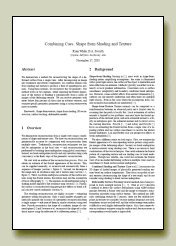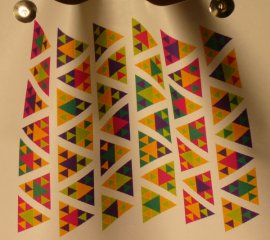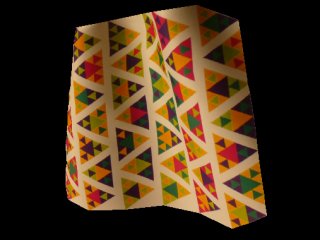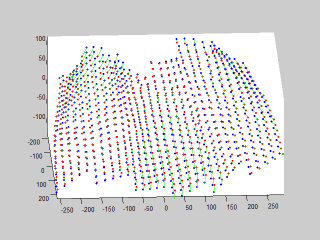|
Combining Cues: Shape from Shading and Texture |
 |
We demonstrate a method for reconstructing the shape of a deformed surface from a single view. After decomposing an image into irradiance and albedo components, we combine normal cues from shading and texture to produce a field of unambiguous normals. Using these normals, we reconstruct the 3D geometry. Our method works in two regimes: either requiring the frontal appearance of the texture or building it automatically from a series of images of the deforming texture. We can recover geometry with errors below four percent of object size on arbitrary textures, and estimate specific geometric parameters using a custom texture even more accurately. R. White, D.A. Forsyth "Combining Cues: Shape from Shading and Texture", IEEE Conference on Computer Vision and Pattern Recognition, 2006.
@inproceedings{white2006cvpr, Ryan White, D.A. Forsyth "Combining Cues: Shape from Shading and Texture", Technical Report No. EECS-2005-14, EECS Department, University of California, Berkeley, 2005. |
|
Example: Known Texture |
|
Observed image, with shading and known texture |
|
|
Rerendered from new viewpoint. Video [DIVX 2.9 MB] |
|
|
Reconstructed points: red is from single view geometry, blue from multi-view geometry. Green lines denote errors. Video [DIVX 6.7 MB] |


